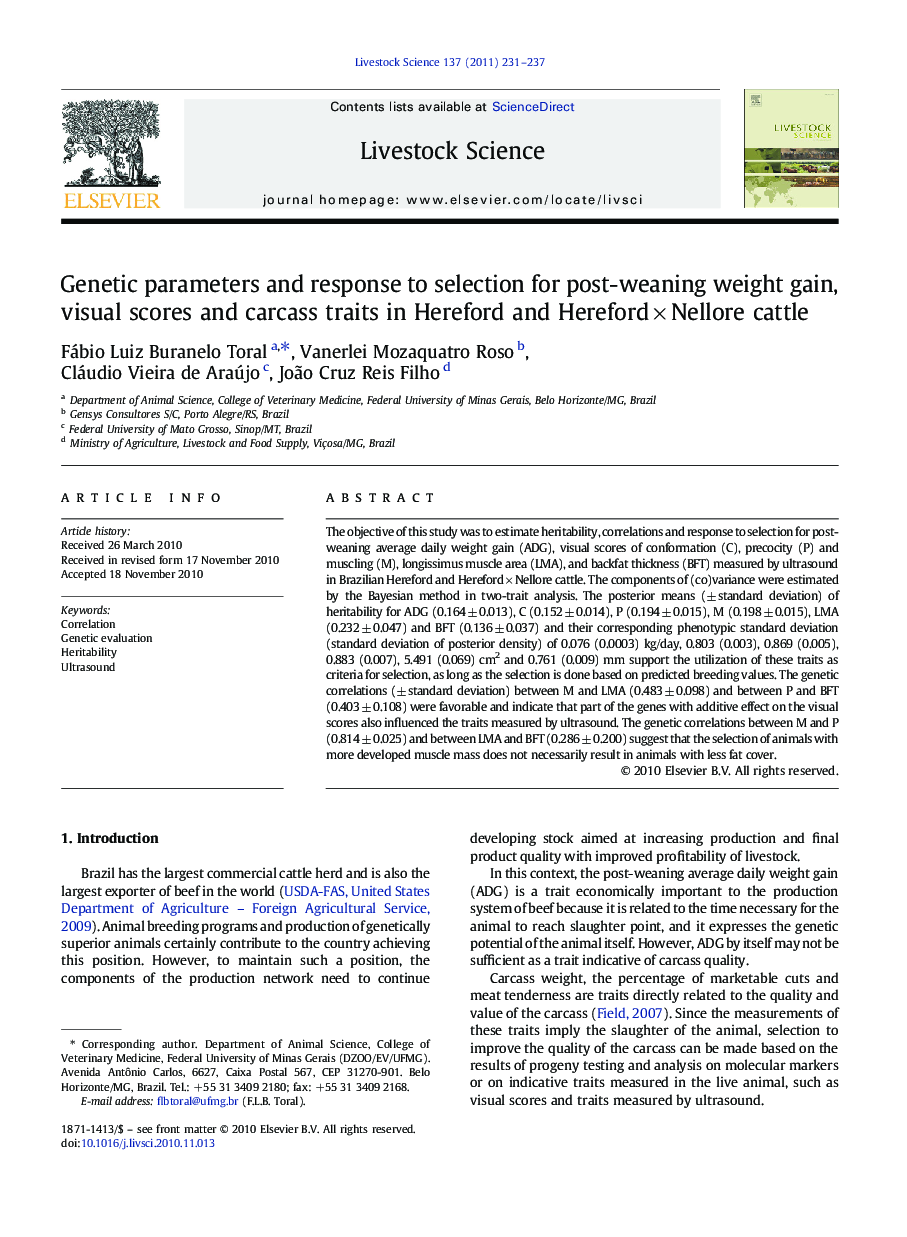| Article ID | Journal | Published Year | Pages | File Type |
|---|---|---|---|---|
| 5790985 | Livestock Science | 2011 | 7 Pages |
Abstract
The objective of this study was to estimate heritability, correlations and response to selection for post-weaning average daily weight gain (ADG), visual scores of conformation (C), precocity (P) and muscling (M), longissimus muscle area (LMA), and backfat thickness (BFT) measured by ultrasound in Brazilian Hereford and Hereford Ã Nellore cattle. The components of (co)variance were estimated by the Bayesian method in two-trait analysis. The posterior means (± standard deviation) of heritability for ADG (0.164 ± 0.013), C (0.152 ± 0.014), P (0.194 ± 0.015), M (0.198 ± 0.015), LMA (0.232 ± 0.047) and BFT (0.136 ± 0.037) and their corresponding phenotypic standard deviation (standard deviation of posterior density) of 0.076 (0.0003) kg/day, 0.803 (0.003), 0.869 (0.005), 0.883 (0.007), 5.491 (0.069) cm2 and 0.761 (0.009) mm support the utilization of these traits as criteria for selection, as long as the selection is done based on predicted breeding values. The genetic correlations (± standard deviation) between M and LMA (0.483 ± 0.098) and between P and BFT (0.403 ± 0.108) were favorable and indicate that part of the genes with additive effect on the visual scores also influenced the traits measured by ultrasound. The genetic correlations between M and P (0.814 ± 0.025) and between LMA and BFT (0.286 ± 0.200) suggest that the selection of animals with more developed muscle mass does not necessarily result in animals with less fat cover.
Related Topics
Life Sciences
Agricultural and Biological Sciences
Animal Science and Zoology
Authors
Fábio Luiz Buranelo Toral, Vanerlei Mozaquatro Roso, Cláudio Vieira de Araújo, João Cruz Reis Filho,
